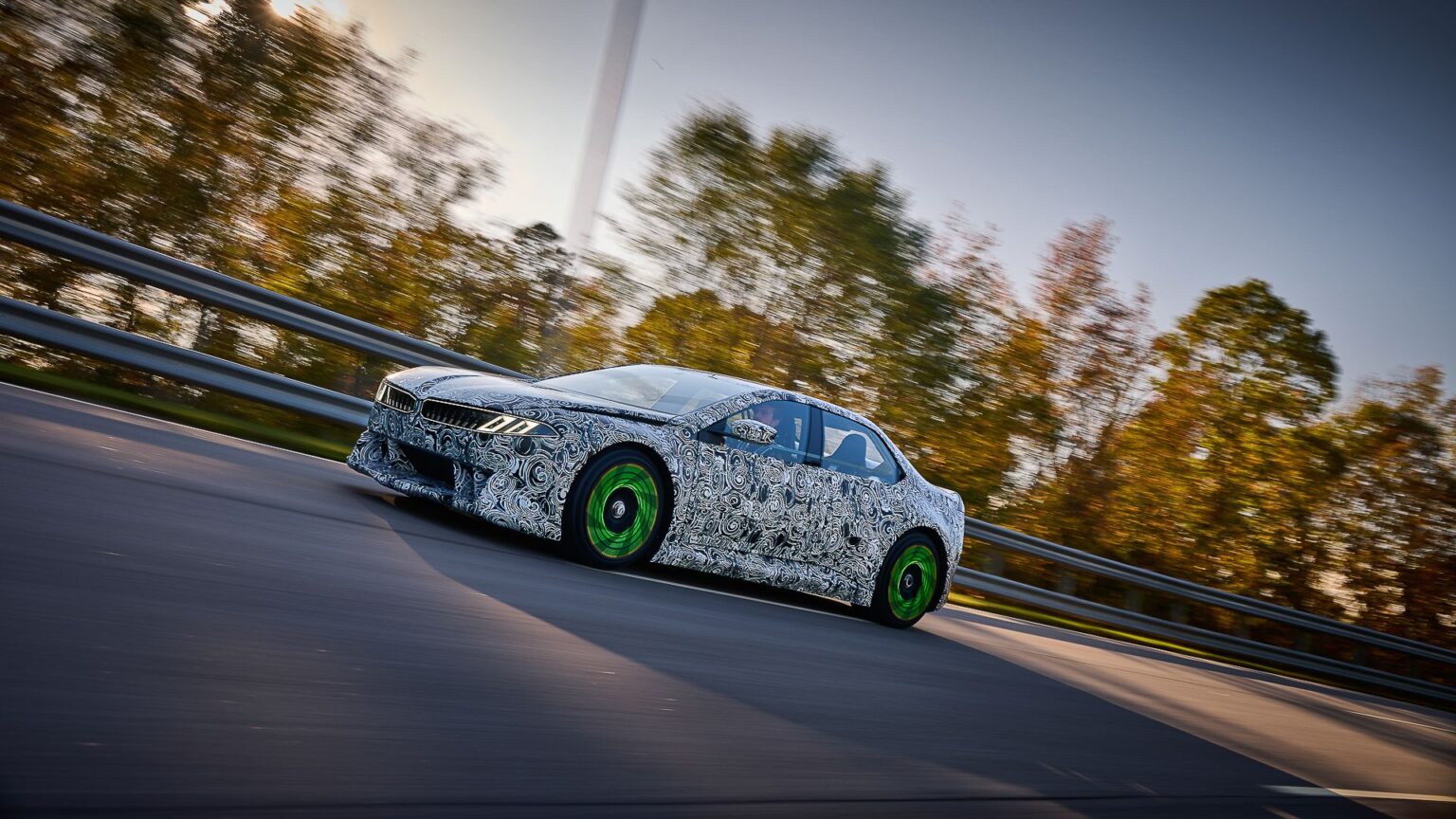BMW has claimed that its latest generation new electric vehicle architecture will not only significantly improve the electric range and recharge times for its newest range of electric vehicles, but also allow the BMW Group to launch EVs with cheaper starting prices. During its Tech Days events in Landshut, the Munich brand revealed its new, sixth-generation BMW eDrive technology – dubbed ‘Gen6’ – which it says will provide a “quantum leap” forward in energy density, charging speed, and range when it makes its debut on BMW’s newly unveiled ‘Neue Klasse’ EV range.
So significant is this update, BMW states that overall efficiency on the Neue Klasse has increased by 20 percent, while the overall cost of the drive system in the Gen6 is up to half that of its predecessor. The first model to receive the new platform will be the iX3, first teased in September as the ‘Vision Neue Klasse SUV concept.’
Slimmer, Faster, Further. The New Gen6 Batteries Increase Range By 30 Percent
The new 800-volt scalable platform is built around a new nickel-manganese-cobalt (NMC) high-voltage battery, the slimmer design of which allows it to be integrated into all EVs across the BMW Group, including Rolls-Royce and Mini. The evolution has even been earmarked for the high-performance BMW M range. Brand-new cylindrical cells make up the battery packs, and are said to be 20 percent denser than those used in the Gen5 predecessor. As a result, both charging times and electric range could improve by up to 30 percent, “with certain models achieving even higher figures.”
For context, this could theoretically increase the electric range of a BMW iX xDrive60 in the USA from between 316 and 340 miles to well beyond 400 miles, with BMW claiming that a Neue Klasse model could take on enough electric charge for 186 miles of range in just 10 minutes. BMW has also stated that the new architecture will come with bidirectional charging as standard.
How These High-Voltage Batteries Will Be Made
The batteries themselves will be produced in two sizes: 95 millimeters (about 3.5 inches) and 120 millimeters (4.7 inches) tall, with both measuring 46 millimeters (1.8 inches) in diameter. Tellingly, the new cells dispense with modules and internal struts altogether, making them easier to pack, and thus saving both time and money during production.
BMW will instead use a ‘cell-to-pack’ process, varying the number of cells as required for the size of the EV being built. These packs will then be bolted to the chassis itself, making them a fundamental part of each EV’s base, a move BMW believes will save cabin space, increase structural integrity, save money on parts, and reduce overall curb weight.
The Neue Klasse batteries will be assembled at five different facilities worldwide – Irlbach-Straßkirchen (Germany), Debrecen (Hungary), Shenyang (China), San Luis Potosí (Mexico) and Woodruff (USA) – complete with neighboring supply chains as part of a new ‘local for local’ approach, one that BMW believes will safeguard production “in the event of unforeseen political and economic events.”
The Brain Behind The Brawn: The BMW Energy Master
BMW puts much of this “technological leap forward” down to its new Energy Master. This central control unit is mounted to the battery, controlling the power supply to the electrical motors and onboard electrical systems to ensure “safe and intelligent” – efficient, in other words – use of power.
For instance, the system will automatically switch the EV architecture between 400 volts and 800 volts at the charging station when required for more efficient, and ultimately quicker, recharging.
BMW Capable Of Quad-Motor Production EVs For The First Time
Alongside the new batteries, two motors form part of BMW’s sixth-generation BMW eDrive technology architecture: the heavily updated EESM and the new ASM. Introduced with the first generation iX3 in 2018, the electrically excited synchronous motor (EESM), until now, has been the only electric motor option available to the BMW Group, and was exclusively used to power the rear axle. Two could be fitted upon request, however.
For 2025 and beyond, the motor has been heavily updated, with an adapted inverter design, a new water/oil cooling system, and a more efficiently packaged single-speed gearbox both reducing the unit’s weight, increasing its rigidity, and reducing internal energy losses by 40 percent. Even noise levels during its operation have dropped.
The asynchronous motor (ASM), meanwhile, is a brand-new development. Fitted exclusively to the front axle (again, two can be fitted), the ASM weighs 154 pounds and is available with two different power outputs. Tellingly, this does mean BMW can now offer quad-motor options on their production EVs for the first time, which we can expect in future M cars.
Production Of The Gen6 Begins This Summer
With pre-production already underway at the BMW Group’s Steyr plant in Austria as of last September, official series production of the Gen6 electric architecture is set to begin this summer, with some Neue Klasse mules already undergoing initial testing.
Having invested one billion euros into the facility, which already produces 600,000 electric units and their componentry (rotors, stators, transmissions, inverters, and housing) annually, BMW is hopeful that half of its on-site employees “should be working in electric mobility” by 2030.
Read the full article here


